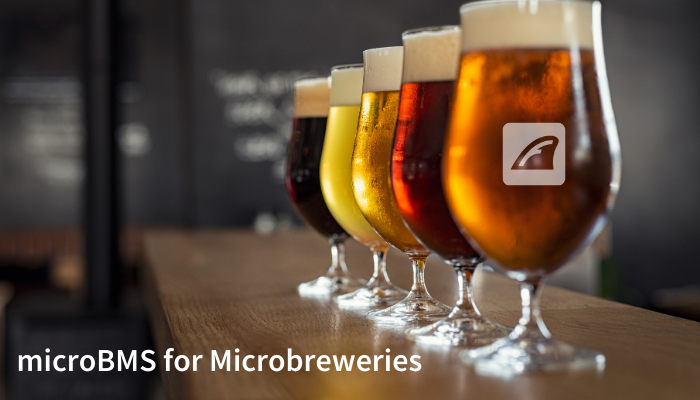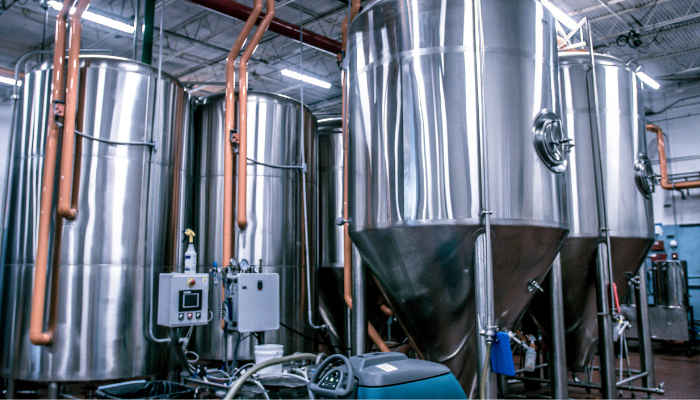The home of smart buildings, smart equipment and IoT

The craft brewing scene has been exploding since 2012 with no signs of slowing down. Towns that once had one or two local breweries now boast of 10 to even 20 within a given region. In fact, according to the Craft Brewers Association, retail sales of craft beer increased 6%, up to $29.3 billion, and account for more than 25% of the $116.0 billion U.S. beer market. While smaller, nano breweries seem to open up daily, there are lots of local craft brands adding capacity to become regional craft breweries that distribute widely across the U.S.
Every brewer knows that the secret to great craft beer lies in a finely tuned process and quality control. This makes the brewing industry ripe for automation through the use of microBMS, a simplified version of a traditional automation system.
Here are a few ways that microBMS can help brewery owners improve the management of their operations.
Yes, there are massive brewing operations like AB InBev who automate the entire process at the touch of a button. But there are other, smaller and more affordable applications of automation and controls that could benefit smaller breweries as well. If you look at the equipment that makes up the “Brew House,” there are opportunities for automation in each piece of big, shiny equipment.

Within the beer making process, you have:
These processes and equipment can be controlled and monitored using a BMS. For example, the water temperature in the hot liquor tank, the temperature of the fermentors, or the steam valves for the brew kettle can be controlled and managed from a simple dashboard.
Temperature fluctuation in your fermenter, your brew kettle, and your mash tun can have serious negative impacts in your beer. If the water temperature is not right in the mash tun, you lose efficiency and it affects the final gravity of the beer; if the fermenting temperature is off, your yeast can produce off-flavors. But with a BMS system, brewers can set alarms so that when water or liquid hits a certain temperature, someone is alerted immediately. There are so many things that can go wrong on brew day and during fermentation that can cost you money.
Environmental controls are important for comfort levels of patrons in the taproom, but they are equally if not more important for quality control in the brewery. Maintaining temperatures in your cellar where beer is aging, your walk-in cooler where beer is being stored, and in the production room, where beer is being packaged are all important. If your chiller fails and the cellar where you’ve been aging that amazing stout or sour beer gets too hot, you could end up dumping barrels of beer that you’ve spent months or even years perfecting. If your walk-in doesn’t maintain proper temperature, your beer lines will foam up and you’ll end up pouring excess beer down the drain.
Implementing a comprehensive BMS system can help reduce the number of people in charge of each stage of the process, thus reducing your chance for human error. Rather than relying on your brew staff to check and log temperatures each day, it can be done automatically and alarms can be set. This reduces labor by eliminating that task, and also reduces your chance for human error.
Manual data entry is common in smaller breweries as brewers and cellar staff check temperatures and record data on either clipboards or in brewing software. But with the help of a BMS, various temperatures could be automatically logged, creating a historical record of equipment performance and environmental conditions. This not only helps remove the human element of checking and logging temperatures, it gives you a dashboard of data and a historical record that can be reviewed. So, if a beer presented an off flavor, the process could be reverse engineered to discover what went wrong.
Having this type of historical data could also help with regulation compliance, and help keep up with various experimentations happening in the brewery.
Dashboard technology makes data management and monitoring much more streamlined. Having dashboards that track and display environmental temperatures and control points can help make back of house management and process control easy. It can be a great way to display information used in other aspects of the brewery as well. For example, digital signage using BMS graphics can display what’s going on behind the scenes and be a cool presentation for customers during tours to show the brewing process.
For brewery owners, your products are in a constant phase of production. Whether it be finished product waiting to be sold, product currently being brewed, or product being fermented and/or aged. There are always multiple stages of the process happening at once 24/7/365. Since brewery owners and staff can’t be at the brewery all hours of the day and night, it would be great to have some sort of alarm routine in place in the event that something goes wrong. That’s where remote alarming and remote access through BMS can help. Not only could critical staff be alerted, they can manage controls remotely to make adjustments right from a mobile phone.
As you can see, there are a lot of great opportunities for microBMS in a brewery setting. Having the ability to monitor equipment and environment and manage controls through a centralized and remote system could help improve processes, save money, and reduce labor. FIN’s microBMS would be the perfect application for microbrewery owners looking to have more control and flexibility of their brewery. The system is easy to install and set-up, making it both an approachable and affordable solution. Cheers to that!
Scott joined J2 Innovations as a partner in 2011 and is now Vice President of Knowledge Excellence. He has a wide range of responsibilities, including evangelism, business development and training. Scott is well known as an industry expert in smart homes and smart buildings. He is a past president of ASHRAE, and is currently a board member for Project Haystack. Scott attended Clarkson University for Mechanical Engineering and graduated with a BS/Business in Organizational Innovation.
Topics from this blog: End User FIN microBMS
Back to all posts
J2 Innovations Headquarters, 535 Anton Blvd, Suite 1200, Costa Mesa, CA 92626, USA. Tel: 909-217-7040